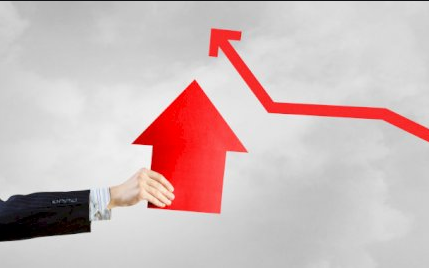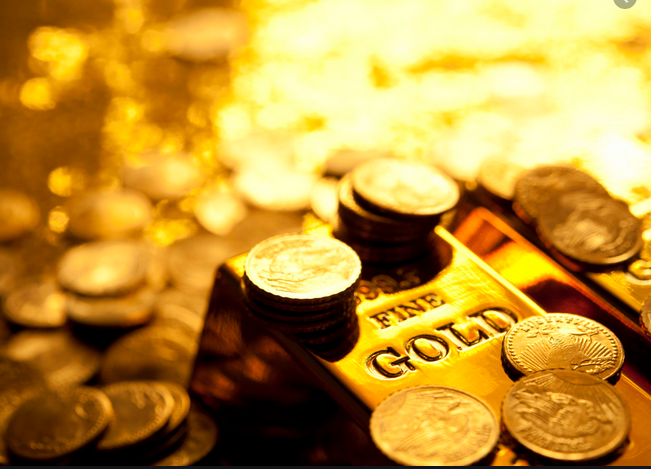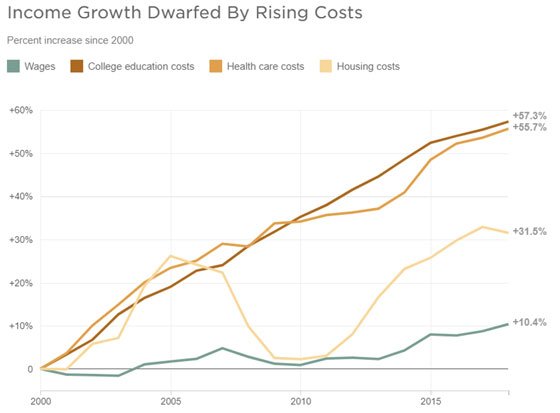“Government,” observed the great Austrian economist Ludwig von Mises, “is the only institution that can take a valuable commodity like paper and make it worthless by applying ink.” Mises was describing the curse of inflation, the process whereby government expands a nation’s money supply and thereby erodes the value of each monetary unit—dollar, peso, pound, franc, or whatever. It shows up in various ways, most visibly in the form of rising prices, which a lot of people confuse as the inflation itself. The distinction is important because, as economist Percy Greaves once explained so eloquently, “Changing the definition changes the responsibility.” Define inflation as rising prices and you’ll think that oil sheiks or private businesses are the culprits, and price
Topics:
Lawrence W. Reed considers the following as important: 6a.) Gold Standard, 6a) Gold & Monetary Metals, Featured, newsletter
This could be interesting, too:
Nachrichten Ticker - www.finanzen.ch writes Die Performance der Kryptowährungen in KW 9: Das hat sich bei Bitcoin, Ether & Co. getan
Nachrichten Ticker - www.finanzen.ch writes Wer verbirgt sich hinter der Ethereum-Technologie?
Martin Hartmann writes Eine Analyse nach den Lehren von Milton Friedman
Marc Chandler writes March 2025 Monthly
“Government,” observed the great Austrian economist Ludwig von Mises, “is the only institution that can take a valuable commodity like paper and make it worthless by applying ink.”
Mises was describing the curse of inflation, the process whereby government expands a nation’s money supply and thereby erodes the value of each monetary unit—dollar, peso, pound, franc, or whatever. It shows up in various ways, most visibly in the form of rising prices, which a lot of people confuse as the inflation itself. The distinction is important because, as economist Percy Greaves once explained so eloquently, “Changing the definition changes the responsibility.”
Define inflation as rising prices and you’ll think that oil sheiks or private businesses are the culprits, and price controls are the answer. Define inflation in the classic fashion as an increase in the supply of money, with rising prices as just one consequence, and you then have to ask the revealing question, “Who increases the money supply?” Only one outfit can do that legally; all others are called “counterfeiters” and go to jail.
So, it’s critically important to remember that inflation is not rising prices. Inflation is an increase in the money supply. Rising prices are just one of the effects of that.
Why do governments inflate? They all share one thing in common: an insatiable appetite for revenue. For both political and economic reasons, taxing and borrowing have limitations. But if you also have a monopoly over money creation, that becomes a third option for the monopolist. Anybody who thinks that politicians who possess such power will not abuse it is smoking some really bad weed.
Before paper money, governments inflated by reducing the precious-metal content of their coinage. The ancient prophet Isaiah reprimanded the Israelites with these words: “Thy silver has become dross, thy wine mixed with water.” Roman emperors repeatedly melted down the silver denarius and added junk metals until the denarius was less than 1 percent silver. The Saracens of Spain clipped the edges of their coins so they could mint more until the coins became too small to circulate.
Paper money originated in China in the 7th Century A.D. but for centuries wherever it was adopted, it tended to be a receipt for the real thing, namely, gold and/or silver. Then kings and queens realized they could print paper money, strip it of its redeemability into precious metal, and force it upon their people. The last 300 years of monetary history is riddled with paper hyperinflations that produced skyrocketing prices and economic disaster. Bolivia and Zimbabwe are among the countries that destroyed their own paper monies twice all within my own lifetime.
Rising prices are not the only consequence of ballooning the money supply. Inflation also erodes savings and encourages debt. It undermines confidence and deters investment. It destabilizes the economy by fostering booms and busts. If it’s bad enough, it can even wipe out the very government responsible for it in the first place. It can lead to even worse afflictions. Hitler and Napoleon both rose to power in part because of the chaos of runaway inflations.
In our age, inflation of the money supply has taken a different and more sophisticated form than coin clipping or simple paper printing. With precious metal “backing” removed to accommodate reckless spending, governments still print a lot of paper money and they mint a lot of junk-metal coinage. But today, inflation (properly defined) is primarily in the form of credit expansion orchestrated by central banks like the Federal Reserve. It lowers interest rates for a time, but the resulting increase in purchasing power eventually pushes up both prices and interest rates.
In the wake of the 9/11 terrorist attacks on New York and Washington, the Federal Reserve embarked upon years of monetary growth and dirt-cheap interest rates. Much of the new money and credit worked its way into real estate because of regulations aimed at boosting home ownership. That deadly combination of easy money and misallocation of resources into insanely cheap mortgages produced a bubble. When the Fed reversed itself and jacked up interest rates in 2007-08, the bubble burst and produced the stock market crash and Great Recession of 2008-09.
For more than a decade now, the Fed has been flooding the economy with liquidity. Many people have been puzzled that years of easy money and low interest rates have not produced soaring consumer prices, but that was explained recently by economists John Greenwood and Steve H. Hanke. In their February 22, 2021 op-ed in The Wall Street Journal, titled “The Money Boom is Already Here,” they wrote:
After that crisis [of 2008], the Fed began quantitative easing, which massively expanded its balance sheet. At the same time, commercial banks were busy shrinking their loan books from mortgage debt and securities, which meant the Fed’s injections did little more than offset the contraction of commercial bank balance sheets. As a result, money growth from 2010-19, as measured by the Fed’s broadest money measure, M2, averaged only 5.8% a year.
While money on the Fed’s books grew rapidly, money in the hands of the public grew more slowly. Spending and inflation were restrained, and the postcrisis recovery was anemic, with [price] inflation persistently below the Fed’s target.
The extended period of price tranquility may now be ending. Signs of a bubble in the stock, commodity, cryptocurrency and real estate markets are reappearing. Consumer prices are ticking up. And the reason why none of this should be surprising is to be found in this revealing paragraph in the same op-ed by Greenwood and Hanke:
Fast-forward to February 2020. Since then, the quantity of money in the U.S. economy, measured by M2, has increased by an astonishing $4 trillion. That’s a one-year increase of 26%–the largest annual percentage increase since 1943.
As COVID restrictions lift in coming weeks and months, demand for goods and services will rebound, at least for a while. Powered by all the funny money sloshing around in the system, pressure for producer and consumer prices to rise will come to a boil. I’m betting that well before the Biden administration completes a term, we’ll see annual rates of price increases in double digits, accompanied by rising interest rates, to be followed once again by another painful economic correction.
When all this happens, we’ll look back and note that nothing really ever changed. Only the numbers and the magnitudes got bigger. It took a while for easy money to blow prices up, longer than most economists expected. But ultimately, the laws of economics cannot be repealed by any mortal, not even presumptuous politicians and planners in government.
I think that’s a lesson we should never have forgotten. We are about to learn it all over again, and it’s not going to be pretty.
Tags: Featured,newsletter








